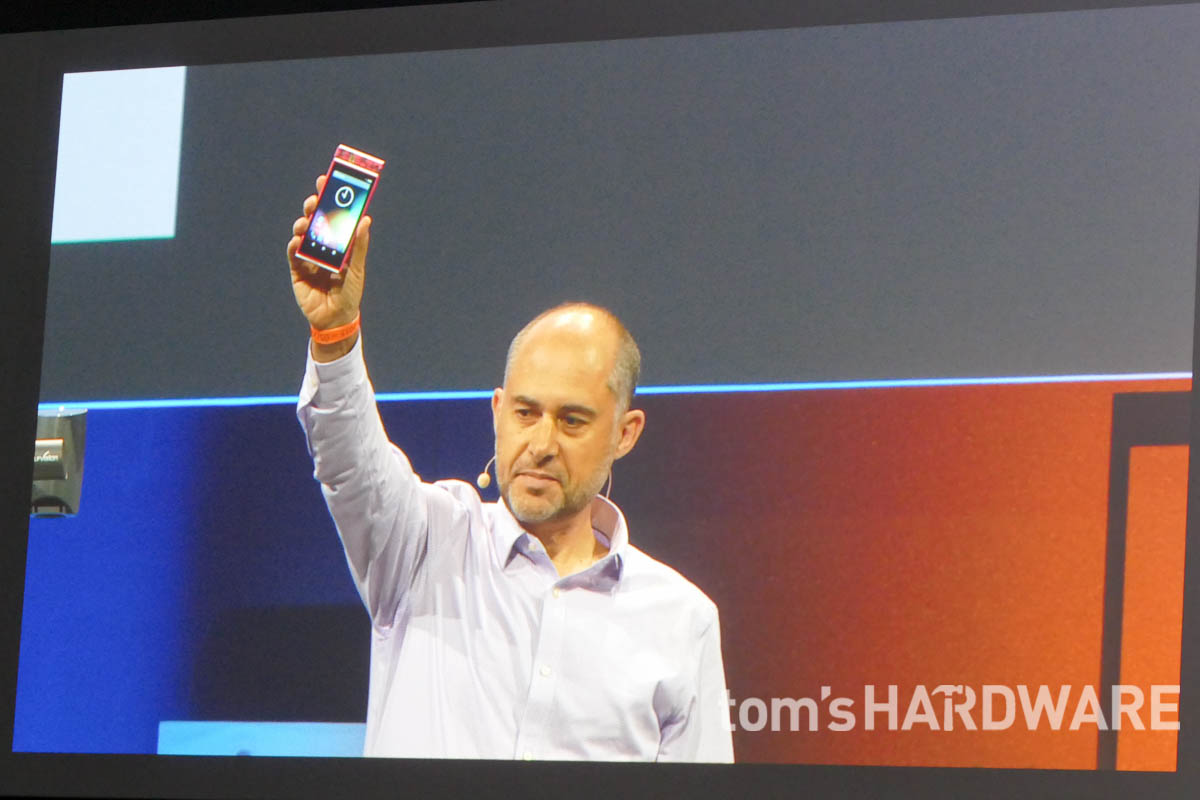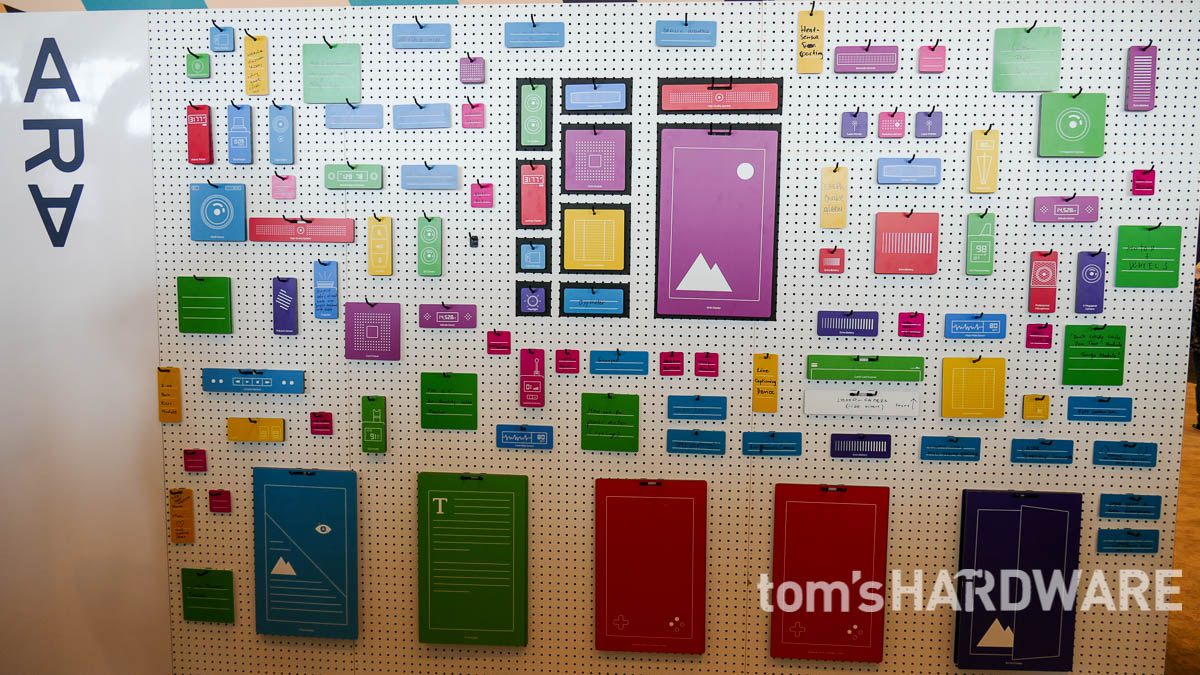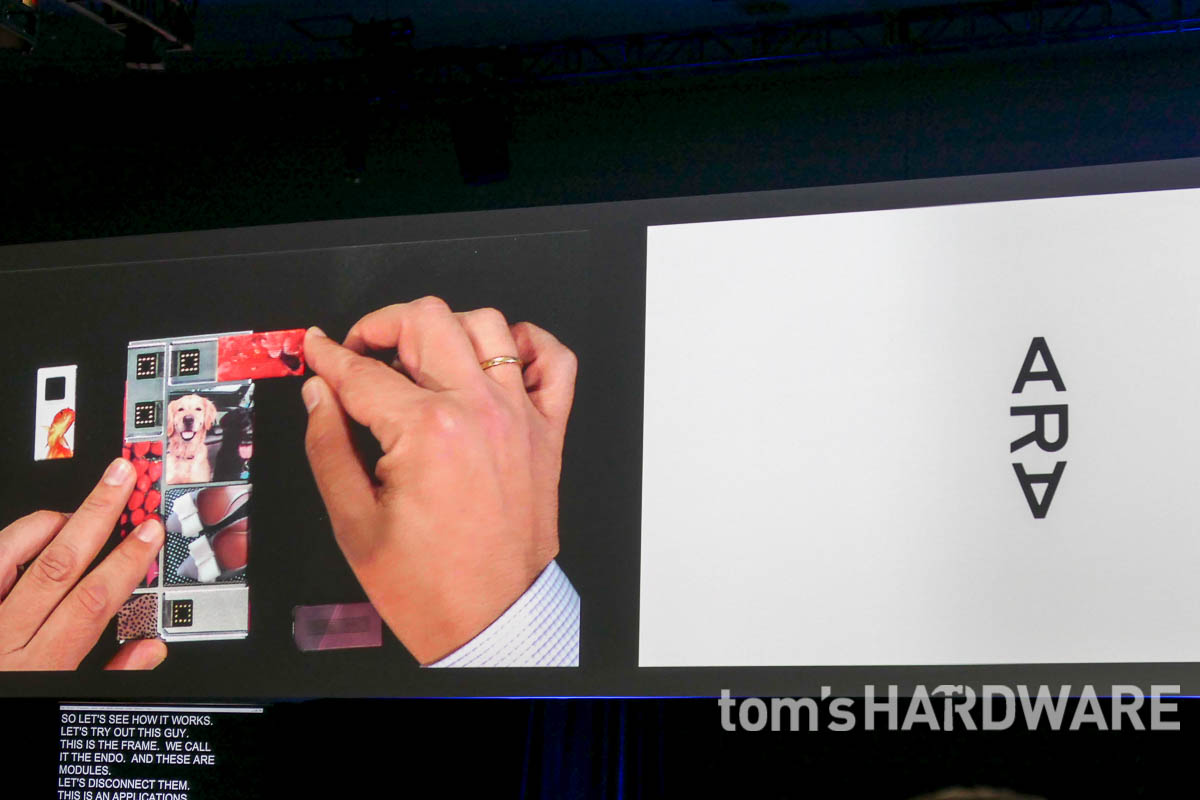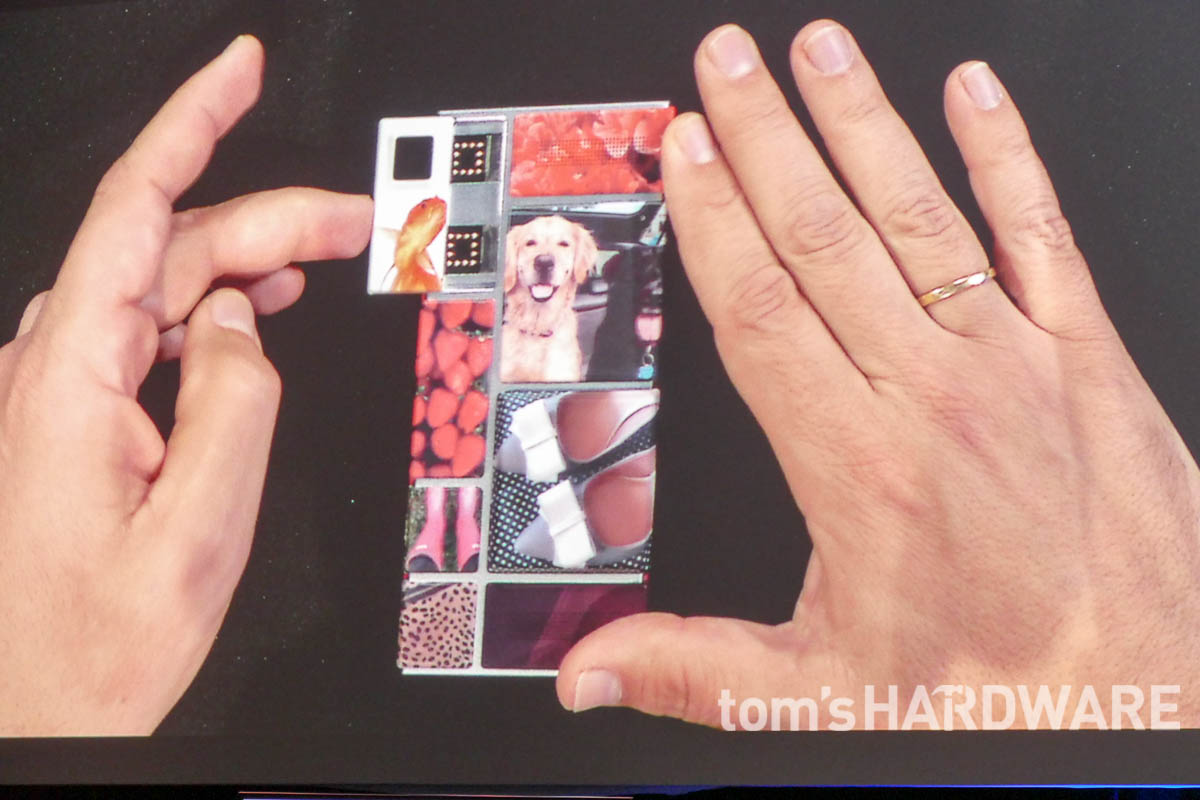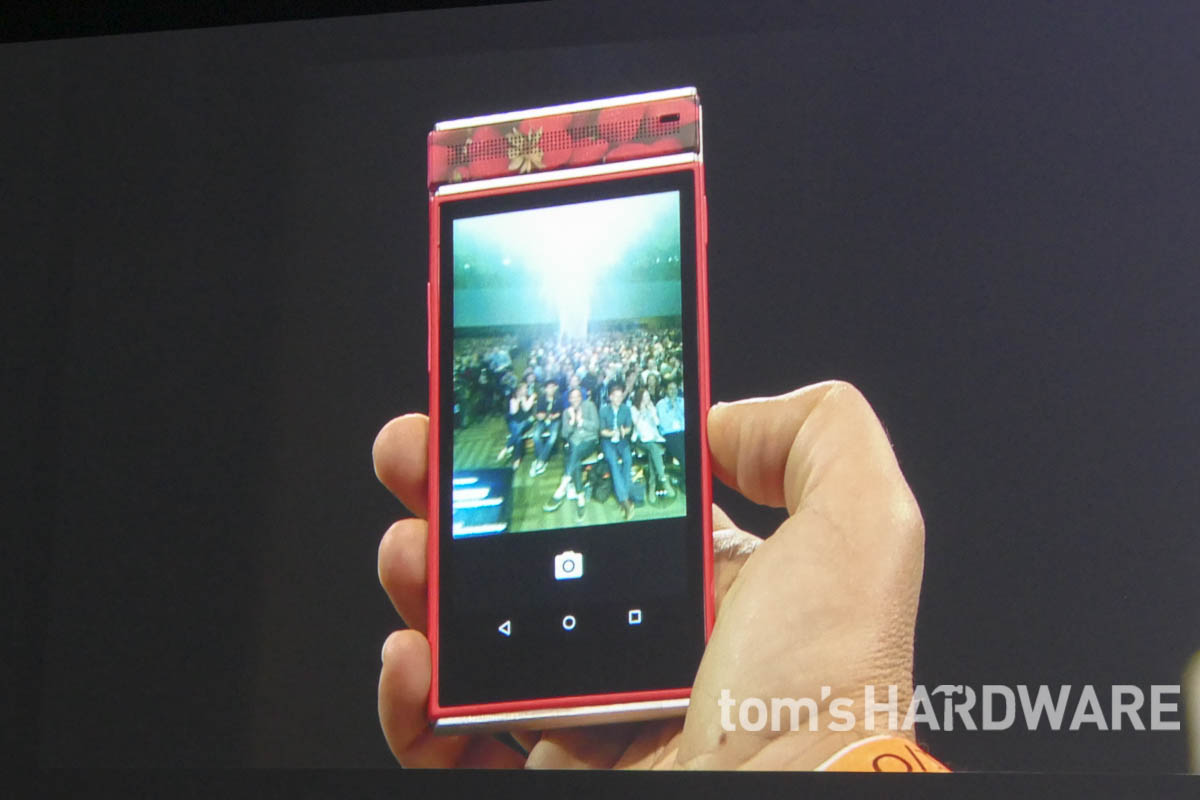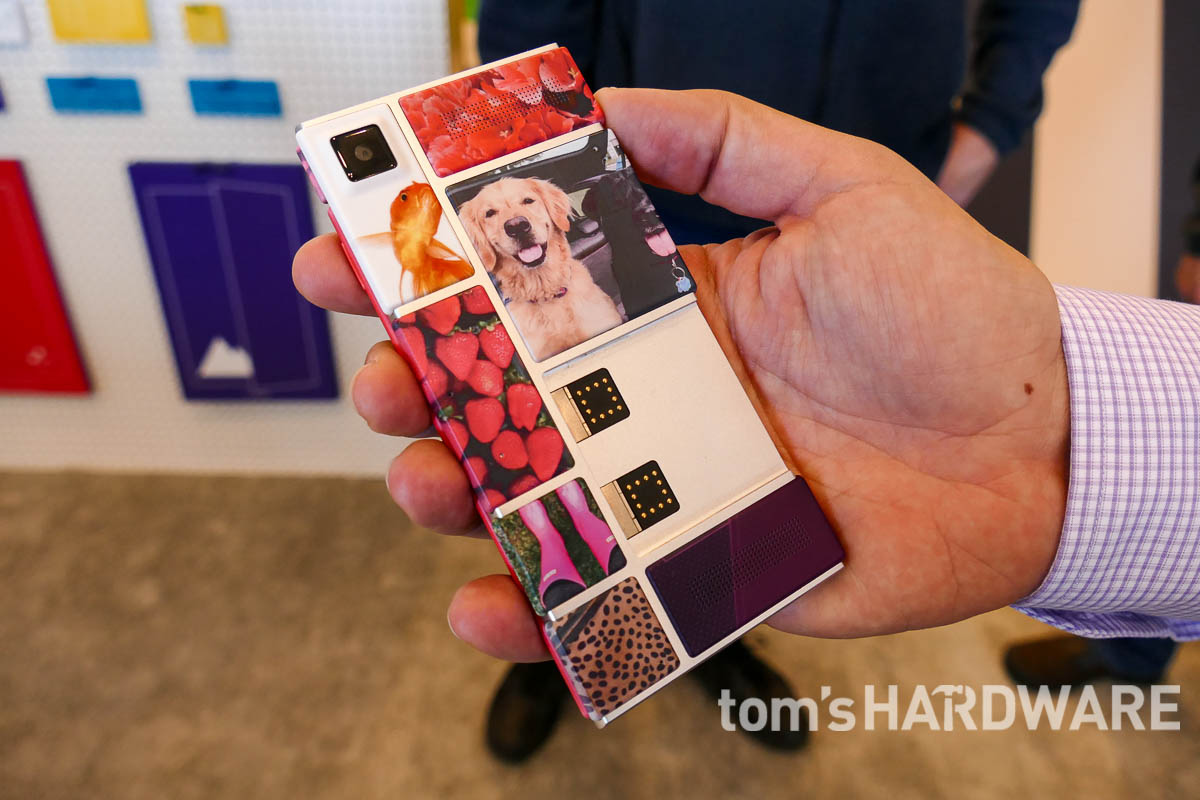Working Project Ara Phone Hands On, Interview With New ATAP Ara Lead Rafa Camargo
We interviewed Project Ara Technical and Engineering Lead Rafa Camargo and briefly went hands on with a working phone.
Since being announced in 2013 by Motorola, Project Ara, Google’s modular smartphone project that is being developed by its ATAP (Advanced Technology and Projects) division, has gone through a few ups and downs. The initial excitement about the project soon turned to skepticism in many circles as many questioned whether Google could make a modular smartphone work, and if people even wanted such a product.
Then in January 2015, at the Project Ara Developer Conference, Google showed off a working second-generation Spiral 2 prototype that validated the concept. It also announced that a pilot program to sell Ara phones and modules in Puerto Rico would be starting in the second half of 2015.
Later at Mobile World Congress in March, budget phone OEM Yezz made a big splash with its announcement of support for Ara. The company probably was a little more enthusiastic for the platform than Google wanted and showed off some fanciful module ideas that were a bit beyond Google’s vision for Ara. Despite that hiccup, it looked like Project Ara was final starting to coalesce into an actual product you might be able to buy.
For this year’s Google I/O, then, we were excited for and expecting to hear more about plans for Project Ara. After nothing was mentioned at all in the initial keynote, we were worried that perhaps the project was in trouble. However, when walking the I/O show floor later in the day, we saw that there was a Project Ara section of in the ATAP booth. Although there weren’t any phones on display, we were told to expect some important Ara news in the following morning's ATAP session.
Hot-Swapping Modules, For The First Time In Public
The ATAP session was full of amazing ideas and new technology, but after over an hour, we were beginning to think that perhaps we were told wrong, and Ara wasn't going to get a mention after all. Just before the end of the session, though, there was a "one more thing" moment, and Project Ara finally made an I/O 2015 appearance.
To our surprise, Ara was presented on stage by a new Google face, Rafa Camargo, instead of the expected Ara project lead Paul Eremenko. Camargo showed an Ara Spiral 2 endo (endoskeleton), the basic metal frame of Ara that holds all the modules. He then proceeded to install a selection of modules into it, including an SoC and battery, and booted up the phone. As far as we know, this was only the second time that a Project Ara Spiral 2 has been publicly turned on, the first time being at the Ara Developers Conference.
The Ara unit Camargo was demoing what seemed to be the same unit that was shown earlier in the year. It was made up of smooth plastic modules with dye-sublimation printed images on them, rather than the 3D printed modules originally presented when Ara was announced. With the Ara still powered on, he then inserted a camera module, which instantly added camera functionality to the phone without having to reboot it.
Get Tom's Hardware's best news and in-depth reviews, straight to your inbox.
It was impressive, and this was the first time the hot-swappable module feature has been shown publicly. With the camera active, Camargo then took the first public photo from an Ara phone.
You can see the results of that shot in the tweet below from the official Project Ara account:
First public photo from our ARA phone at #io15. Next app install will be @googlephotos to fix lighting. #ProjectAra pic.twitter.com/EvFCQbbHo8— Project Ara (@ProjectAra) May 29, 2015
Despite the fact that this was an impressive demo, it was very short, and no additional information as to what comes next for Ara was offered, such as an update on the Puerto Rico pilot. Luckily, we were able to catch up with Camargo at the ATAP booth, which you can see in our interview video below. We also got to briefly go hands-on with a Project Ara phone, but unfortunately, we weren't able to capture it on video.
The Interview
We learned from talking to Camargo that he was new to Project Ara, and this tied into the announcement on the same day that Ara lead Paul Eremenko was moving on from Google. At first this seemed to be a sign of problems with the project, but we later learned that it is all part of the ATAP way.
At ATAP, projects are given two years to go from an idea to a marketable product. At the end of that time, Google can either kill the project, transfer it to Google proper (like it did with Project Tango) or grant an extension, which it has for Ara.
This extension comes with a catch though: the entire team has been refreshed so that new blood can be injected into the project to help turn it into a commercial offering. Camargo has replaced Eremenko as the new head of Ara, and his many years at Motorola before a brief stint at Amazon's hardware division, Lab126, should be immensely beneficial to Project Ara.
Camargo wasn't able to give us any real new information, his hands being tied by PR, but he was still able to give us some good insight as to where Ara is today. He also explained why it is such an important project for Google.
In our interview, we asked Camargo what's next. His response was that the "hard part," the underlying technology development, is complete, and now they are focusing on building "hardware for partners."
He also said that Project Ara enables "innovation in hardware in the same way that [mobile] apps did for software," and they were in the process of getting hardware partners on board to "create an ecosystem of hardware solutions."
He also talked about how Ara will fundamentally change how we use mobile devices. "Smartphones have been great in bringing mobile computing to everyone," he said, but he notes that when you look at the history of computing, when vertically integrated platforms have changed to open ones, innovation has exploded, and costs have lowered. He believes that mobile is ripe for this change, and that Project Ara can drive it.
Project Ara will not only allow big companies to contribute ideas to the platform, but smaller garage-based innovators, too. Lastly, he talked a little about how Ara isn't just innovation in hardware but "innovation in business models" as to how modules will be sold. You will be able to buy, rent or even trade modules for Ara phones.
Hands On With The Working Project Ara (Spiral 2) Handset
Our hands-on time with the Ara Spiral 2 prototype (above) was extremely limited, and I couldn't shoot any video of it. We were able to hold the working unit but weren't able to explore any of its functionality, nor add or remove any modules. We can say that the unit felt like a finished product, rather than some cobbled–together prototype. Of course, thanks to the metal endo, it did feel heavier than most current smartphones, but not so much that it would bother us.
However, one limitation due to the modular nature was immediately clear: The screen-to-body ratio for such a large device was quite poor. There was a lot of bezel surrounding the 4.5-inch screen, but, at least using current technology, there probably isn't a way to address this without losing the modular functionality.
Like Google is doing with virtual reality and its Cardboard viewer, it is also trying to democratize mobile hardware development and user customization with Project Ara. However, unlike Cardboard, there wasn't really much new information announced at I/O. It's hard to judge as to where Google is with Ara and how far out it will be before consumers can get their hands on a device.
With the transition to a new leadership team, it's also difficult to even say if the Puerto Rico pilot will happen in 2015. Even so, it was encouraging to see, and even briefly use, a working phone, even though it was still a Spiral 2. The next Spiral 3 revision, which is supposed to be the unit that will be sold during the pilot program, will bring further hardware innovations to the platform.
More news will be released at the next developer conference, but its timing has not been announced yet, and Camargo suggested following the @ProjectAra twitter account for the latest news. Of course, since we're keen on the promised Project Ara, we'll also continue to bring you any news about it -- so stay tuned to our feeds, too.
Follow Alex Davies @alexbdavies. Follow us @tomshardware, on Facebook and on Google+.
-
nikolajj I'm still not sold on this. It will never be as compact or stylish as a unified product.Reply
Maybe in 30 years... -
AdviserKulikov ReplyI'm still not sold on this. It will never be as compact or stylish as a unified product.
It isn't designed to be compact or stylish, it's designed to give you the option of upgrading pieces of your phone in the same way you do a desktop PC. It also lets you chose what you want the phone to be good at. If you really need a quality camera you can add that module, but if not you can swap it for more battery capacity, storage, or some other piece to take up that space.
Maybe in 30 years... -
InvalidError Reply
Not everyone is interested in having the latest, smallest, thinnest, most stylish and expensive phone on the market. Depending on how the parts get priced, I might be interested in being able to build my own phone instead of having to pick a prebuilt phone that comes closest to what I want.15982067 said:I'm still not sold on this. It will never be as compact or stylish as a unified product. -
epaciga Error: "Like Google is doing with virtual reality and its Cardboard viewer, ***tit"Reply
Second paragraph after "Hands On With The Working Project Ara (Spiral 2) Handset" heading -
RedJaron Reply
The Hell you say? ;)15982423 said:Not everyone is interested in having the latest, smallest, thinnest, most stylish and expensive phone on the market.
-
hannibal It is like comparing laptop and desktop computers. One is smaller and another... well is bigger...Reply -
goodevil ReplyIt is like komparin laptop and desktop computers. One is smaller and another... well is bigger...
The only difference desktop is more powerful or cheaper, but less mobile than laptop. Where this still serves as mobile phone - same size factor. So it should be cheaper for same spec pre-built one, which seems highly unlikely in the beginning.
